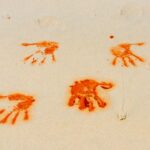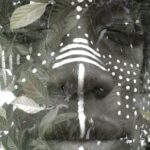The AMA and Australian Indigenous Doctors’ Associations have signed their first memorandum of understanding.
The AMA and the Australian Indigenous Doctors’ Associations (AIDA) have committed to working together to address the ubiquitous inequities facing Indigenous Australians as they sign their inaugural memorandum of understanding promising to empower and collaborate.
According to the Australian Institute of Health and Welfare, almost 50% of the health gap between Indigenous and non-Indigenous Australians results from differences in access to health services and the impact of cultural and historical factors on health.
“Disappointingly, racism and discrimination are still present in our community, which contributes to a significant health gap between Aboriginal and Torres Strait Islander peoples and non-Indigenous Australians,” concurred AMA president Professor Steve Robson.
“This memorandum of understanding will accelerate collaboration between the AMA and AIDA as we work towards closing that gap,” he said.
“Aboriginal and Torres Strait Islander peoples have a right to affordable and culturally safe healthcare, no matter where they are in Australia,” said Professor Robson.
AIDA President Dr Simone Raye highlighted how pushing Australia forward in closing the health gap must remain a priority, to improve the culture of medicine and inspire coming generations of Indigenous Australians.
“Clinical safety is cultural safety … By uniting in purpose, we can continue to unlock endless possibilities through our work towards a shared vision of a culturally safe healthcare system,” she said.
The memorandum aims to foster collaboration to improve medicine for not only Indigenous patients, but also Aboriginal and Torres Strait Islander peoples working in healthcare across Australia.
“Despite the fact that Aboriginal and Torres Strait Islander peoples make up 3% of the population, we make up less than 1% of the medical workforce in Australia. We’re trying to work together to help improve the conditions that our medical students and trainees are going through within the health system,” said Dr Raye.
“A lot of our Aboriginal and Torres Strait Islander medical students and trainees go on to do primary health care in GP setting.”
Dr Raye noted the importance of “role modelling cultural safety within the workforce” in achieving equity in the health workforce.
“There are a number of fellows who work in the different colleges, like the RACGP, to help improve the numbers of GP trainees getting through delivering cultural education and cultural safety training to supervisors and other GPs,” she said.
“We need to improve health by improving the number of allies that we have in the community.”





